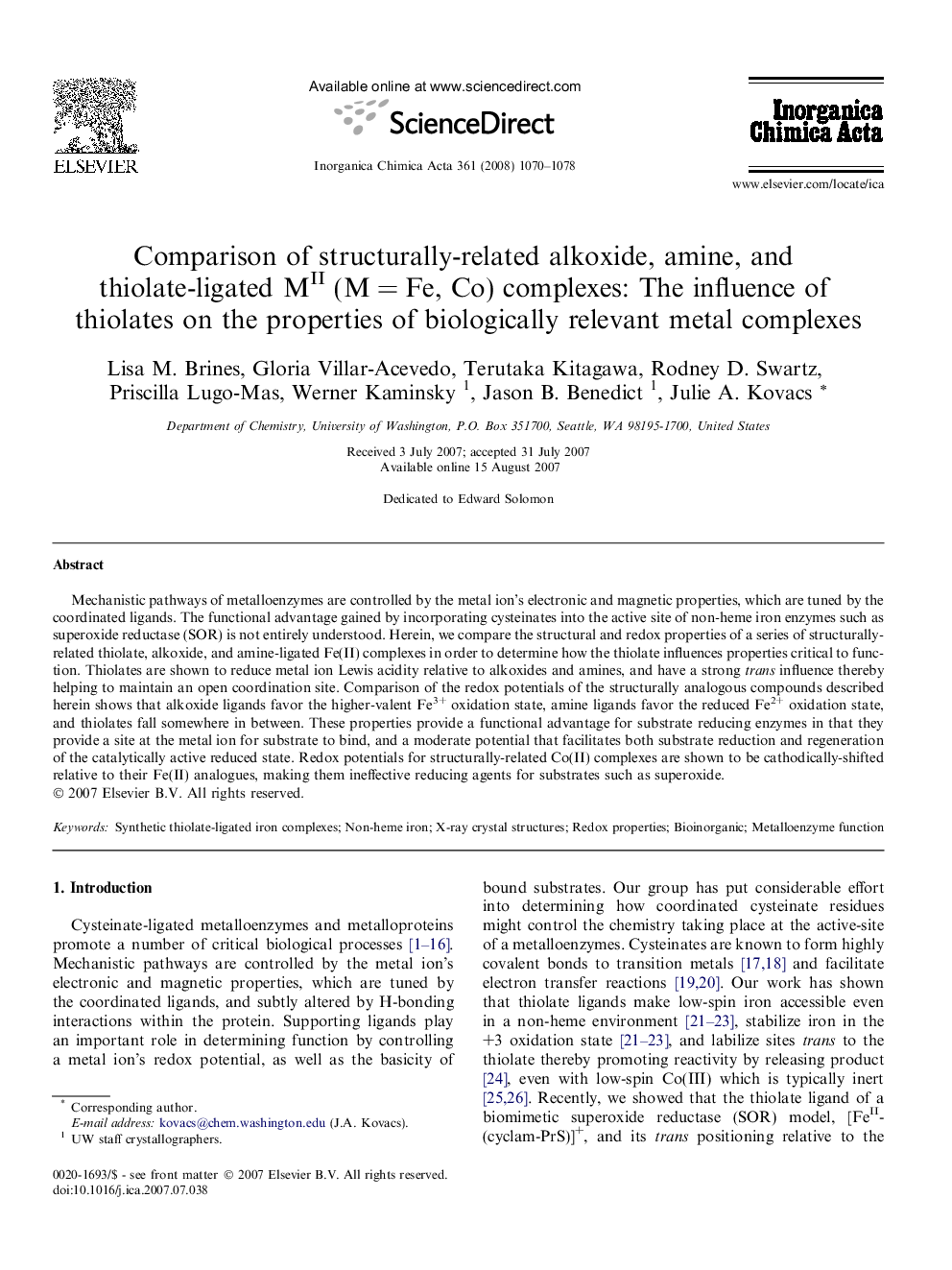| Article ID | Journal | Published Year | Pages | File Type |
|---|---|---|---|---|
| 1310275 | Inorganica Chimica Acta | 2008 | 9 Pages |
Mechanistic pathways of metalloenzymes are controlled by the metal ion’s electronic and magnetic properties, which are tuned by the coordinated ligands. The functional advantage gained by incorporating cysteinates into the active site of non-heme iron enzymes such as superoxide reductase (SOR) is not entirely understood. Herein, we compare the structural and redox properties of a series of structurally-related thiolate, alkoxide, and amine-ligated Fe(II) complexes in order to determine how the thiolate influences properties critical to function. Thiolates are shown to reduce metal ion Lewis acidity relative to alkoxides and amines, and have a strong trans influence thereby helping to maintain an open coordination site. Comparison of the redox potentials of the structurally analogous compounds described herein shows that alkoxide ligands favor the higher-valent Fe3+ oxidation state, amine ligands favor the reduced Fe2+ oxidation state, and thiolates fall somewhere in between. These properties provide a functional advantage for substrate reducing enzymes in that they provide a site at the metal ion for substrate to bind, and a moderate potential that facilitates both substrate reduction and regeneration of the catalytically active reduced state. Redox potentials for structurally-related Co(II) complexes are shown to be cathodically-shifted relative to their Fe(II) analogues, making them ineffective reducing agents for substrates such as superoxide.
Graphical abstractThe functional advantage gained by incorporating cysteinates into the active sites of non-heme iron enzymes is not entirely understood. Herein we compare the structural and redox properties of a series of structurally-related thiolate, alkoxide, and amine-ligated Fe(II) complexes in order to determine how the thiolate influences properties critical to function.Figure optionsDownload full-size imageDownload as PowerPoint slide
